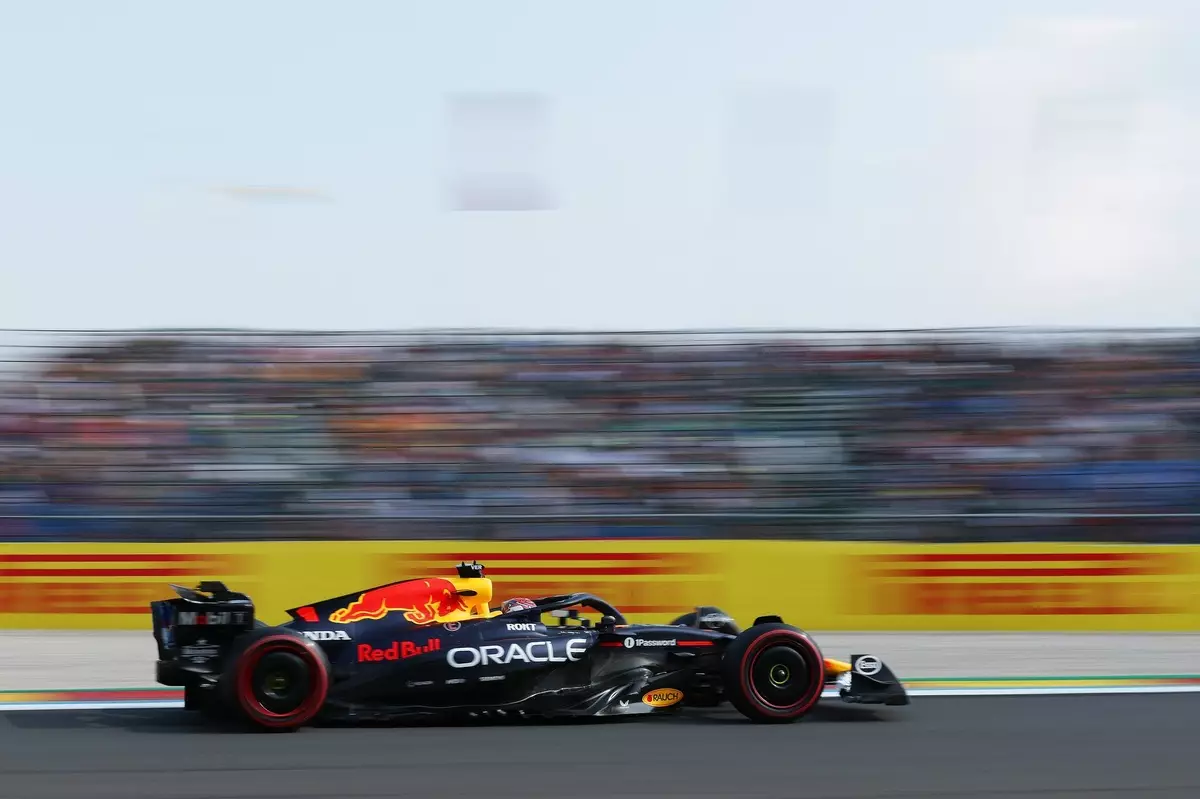The Belgian Grand Prix sprint qualifying session showcased the relentless pursuit of excellence that defines Formula 1. At the heart of this battle is the constant push to fine-tune the delicate balance between raw speed, aerodynamic efficiency, and driver skill. While McLaren appeared dominant across all three segments, their slight lapses in execution played a pivotal role in allowing Max Verstappen to remain competitive. The session was a clear illustration that even with the most advanced machinery, mastery of every nuance—track limits, sector timing, and strategic compromises—is essential. The marginal differences underscore that performance isn’t solely dictated by the car’s raw pace but equally by driver precision and team strategy.
The Struggles Behind the Curtain of Success
Despite McLaren’s apparent dominance in lap times, their drivers’ inconsistent executions revealed vulnerabilities. Oscar Piastri’s narrow qualification in the final segment—costly track limits violation—highlighted that consistency remains elusive. Lando Norris, trailing by six tenths behind Piastri, demonstrated how small errors can translate into significant gaps. These differences illuminate a broader issue: that mechanical superiority does not automatically translate into perfect results. The session’s results emphasize that racing is as much about minimizing mistakes as it is about pushing the envelope of speed.
The Red Bull Dilemma: Power, Downforce, and Compromise
Max Verstappen’s near-miss for pole position underlines the internal and external tensions teams face when optimizing performance. Although Red Bull’s updates offered improvements, they were insufficient to bridge the gap with Piastri’s McLaren. Helmut Marko’s comments reveal a truth about F1 engineering: advancing in one area, such as downforce, often entails sacrificing another, like top speed. Verstappen’s speed, though impressive, was hampered by a roughly half-second deficit in critical sectors—a margin that turns a good lap into a near-miss. It’s a stark reminder that performance enhancement in F1 is a complex game of trade-offs, with the ideal setup being an elusive, constantly shifting target.
The Significance of Sector-Specific Performance
Verstappen’s loss predominantly stemmed from a significant slowdown in sector two, particularly the Fagnes and Stavelot corners. These high-speed turns are crucial, revealing that even the best setups can falter under the relentless scrutiny of track-specific demands. Piastri’s ability to extract more from less—likely through superior technique or better adaptation—underlines the importance of driver finesse in modern F1. Verstappen’s statement that mere straight-line speed won’t close the gap reflects the frustrating reality teams face: overtaking and qualifying are often decided by sector performance, not just top speed.
The Race for Consistency and the Future Outlook
While Red Bull’s struggles are evident, the performance of Yuki Tsunoda adds another layer of complexity. His inability to reach Q3 despite the presence of upgrades signals that development is an ongoing challenge, especially for drivers still adapting to the new technical landscape. Marko’s skepticism about Tsunoda’s chances of scoring points in the sprint indicates that raw pace remains elusive. Yet, the upward trend hints at a broader developmental goal—improvements in qualifying and race pace are necessary for true competitiveness. The upcoming race will test whether Tsunoda’s incremental progress can translate into tangible results amidst the relentless pressure of the sport.
In sum, the Belgian Grand Prix qualifying session is a testament to the multifaceted nature of Formula 1 racing. It is not merely about having the fastest car but about executing with surgical precision, managing engineering compromises, and adapting to an ever-changing set of variables. The gap between McLaren and Red Bull illustrates how marginal gains—or losses—can define the outcome, and it underscores the importance of flawless drive and strategic finesse. As the season unfolds, one thing remains clear: the real battleground is not just speed but mastery—of the car, the track, and oneself. Only those who can harmonize these elements will be in position to triumph.

